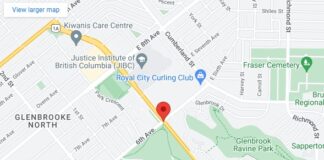“I encourage those using drugs to use only in the presence of someone who can provide help and call for medical assistance if that’s required”
ILLICIT drugs continue to claim the lives of British Columbians in larger numbers than homicides, motor-vehicle incidents, drownings, deaths by suicide and fire-related deaths combined, according to the latest data released by the BC Coroners Service.
“Coroners’ investigations continue to document the volatility and inconsistency of the illicit drug supply in our province,” said Lisa Lapointe, Chief Coroner, on Thursday. “The reality is that every time someone uses drugs purchased from the unregulated market, their life is at risk. Until a safer, regulated supply is widely accessible, I encourage those using drugs to use only in the presence of someone who can provide help and call for medical assistance if that’s required. Anyone using illicit substances, whether they are regular or occasional drug users and whether they know their dealer or not, is currently at risk from the unpredictable, unregulated supply.”
At least 161 lives were lost to toxic illicit drugs in B.C. in April 2022, which is a figure that equates to approximately 5.4 deaths per day. While men have historically accounted for nearly 80% of illicit drug-related deaths, more than 26% of those who died in April were female, continuing a shifting trend that began earlier in the year.
Similarly, while the median age of decedents between March 2020 and February 2022 was 44, the number of deaths in older age categories continues to increase, as 38% of decedents in 2022 were at least 50.
While the threat to substance users remains high in all areas of the province, those on the Island and in northern areas remain particularly at risk. The rates of death in those two health authorities are higher than in 2021 when record numbers of lives were lost throughout B.C.
By Health Service Delivery Area, the highest rates of death in 2022 have been recorded in Vancouver, Thompson Cariboo, Northern Interior, Fraser East and Northwest, which is evidence that the damage inflicted by the toxic drug supply is being experienced in all corners of the province.
Illicit drug toxicity is the leading cause of unnatural death in British Columbia.
“The drug toxicity death review panel report released earlier this year contains advice focused on urgent measures to reduce the numbers of those dying as a result of drug toxicity in B.C.,” Lapointe said. “The panel highlighted access to a safer drug supply as the most critical life-saving need in this crisis, along with a co-ordinated, goal-driven provincial strategy and a comprehensive continuum of substance-use care. BC Coroners Service data for the first four months of 2022 shows us that our province is on the path to yet another tragic milestone in terms of lives lost. I am hopeful that the implementation of the panel’s recommendations, on an urgent basis, will stop these preventable deaths.”
Additional key preliminary findings are below. Data is subject to change as additional toxicology results are received:
* By health authority, in 2022, the highest number of illicit drug toxicity deaths have been in Fraser and Vancouver Coastal health authorities (236 and 197 deaths, respectively), making up 60% of all such deaths during this period.
* By health authority, in 2022, the highest rates of death have been in Northern Health (58 deaths per 100,000 individuals) and Vancouver Coastal Health (47 per 100,000).
* The provincewide rate of death is 41 per 100,000 individuals in 2022.
* By local health area, in 2022, the highest rates of death have been in Lillooet, Mission, Cariboo/Chilcotin, Merritt and Alberni/Clayoquot.
* In 2022, 84% of illicit drug toxicity deaths occurred inside (57% in private residences and 27% in other residences including social and supportive housing, SROs, shelters, hotels and other indoor locations) and 14% occurred outside in vehicles, sidewalks, streets, parks, etc.
* The detection rate of benzodiazepines rapidly increased from 15% of samples in July 2020 to 45% of samples in April 2022.
* Between July 2020 and April 2022, etizolam was found in 40% of illicit drug toxicity deaths that have undergone expedited toxicological testing. Etizolam is a benzodiazepine analogue and non-opioid sedative that does not respond to naloxone and creates life-saving challenges for first responders.
* Analysis of post-mortem toxicology results shows no indication that prescribed safe supply is contributing to illicit drug deaths regionally or provincewide.











